Saturday, March 22,2025. Annette’s Roundup for Democracy.
Continuing the fight.
More resistance to companies that follow Trump’s requirements.
As retailers drop DEI, some Black customers drop them.
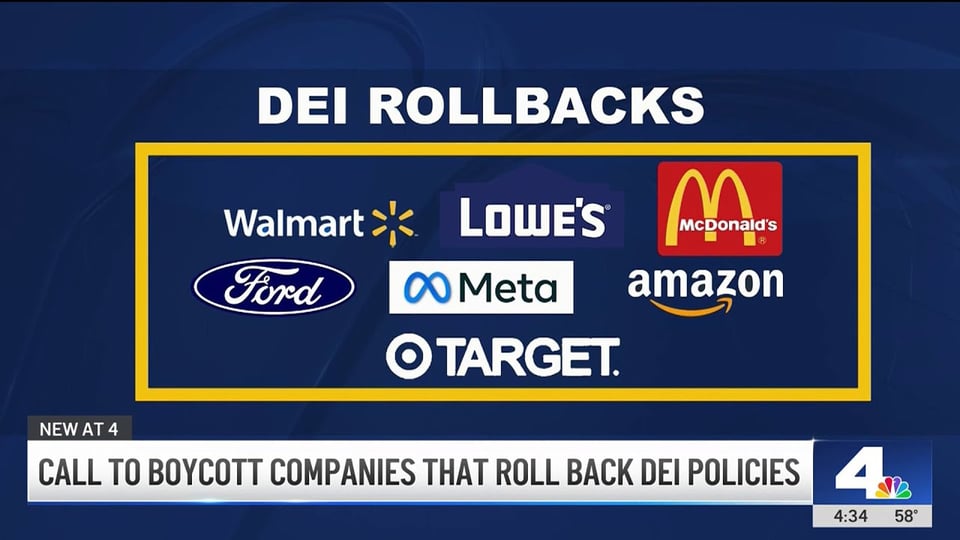
Protests from conservatives and a new president in the White House who describes diversity initiatives as “illegal and immoral” have cleared the runway for private companies to roll back or completely abandon diversity, equity and inclusion commitments. Companies, including Target, Walmart, McDonald’s and Amazon, announced plans to scale back or cut DEI programs in their businesses, signaling to some Black customers that it’s time to rethink where they spend their cash.
NBC News spoke to nearly two dozen Black people across the country about why they are boycotting certain companies and the impact that changes to DEI initiatives have had on their spending habits.
Walmart did not respond to requests for comment about the boycotts. Target declined to comment about the boycotts or the feelings expressed by people who spoke to NBC News. It referred NBC News to a fact sheet about its “belonging” strategy. Amazon said the company is “committed to creating a diverse and inclusive company that helps us build the best range of products and services for our broad customer base.” McDonald’s declined to comment and referred NBC News to the company's commitment to inclusion.
The protest isn’t just about DEI, said Trevon Logan, a professor of economics at Ohio State University. The abandonment of corporate pledges five years after the protests sparked by George Floyd's murder in 2020 is also motivating boycotts.
“Many of the companies that are being targeted are not just companies that derive a significant share of their business from Black customers; they're also companies that employ a large number of Black people,” he said, “who would be in environments where DEI policies could make their work environments safer, better and more productive.”
Black Americans have a collective $1.3 trillion in annual purchasing power, according to some estimates. The total purchasing power of U.S. consumers is more than $17 trillion, said Vicki Bogan, a professor of public policy at Duke University.
Both economists said that for the boycotts to have a marked impact, they will have to be sustained and reach beyond Black consumers.
“If there is buy-in from other communities, then I think there could be enough pressure to change the corporate behavior in a shorter amount of time,” Bogan said.
While Black shoppers aren’t the only people boycotting, Logan pointed to organizing “stemming from Black religious institutions.”
According to Bloomberg Second Measure data, a grassroots “economic blackout” on Feb. 28 had no discernible effect on overall U.S. consumer spending or spending at major retailers. Even with limited impact, Bogan said, the one-day blackout was “successful in raising awareness for this cause.”
Nonetheless, many of the people who spoke to NBC News said they are committed to shopping locally, buying from Black-owned stores when possible and avoiding the box stores that are dropping DEI in the long term. (NBCNews).
Democrats are learning.
Their voters want more fight.
‘Try actually fighting’: Democrats face voters’ fury at town halls.
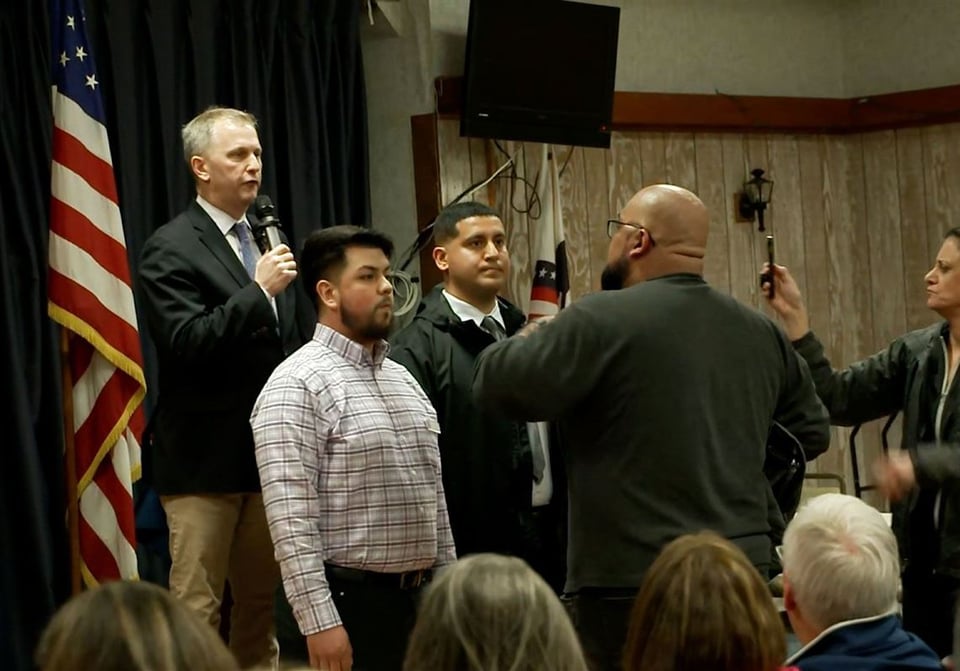
Arizona Sens. Mark Kelly and Ruben Gallego were told to “fight dirtier” and “get in the mud” with Republicans.
“We want you to show some of the backbone and strategic brilliance that Mitch McConnell would have in the minority,” a man told Maryland Rep. Glenn Ivey.
They should try actually fighting for once. They should try to actually be the opposition party,” an attendee groused to CNN at a town hall held by Illinois Rep. Sean Casten.
The sharp criticism from voters comes as Democrats are out of power across all levels of the federal government and lacking a clear leader, exposing deep divisions along ideological and tactical lines over the party’s direction. The schism emerging within the party on the heels of a contentious government funding fight has prevented the caucus from uniting behind a single strategy to counter Trump and attempt to make political inroads ahead of next year’s midterm elections. (Click on the headline 👆to read the whole article.CNN)
One more thing.
An interesting fact from the article above-
“Democrats and Democratic-aligned independents say, 57% to 42%, that the party should mainly work to stop the Republican agenda, rather than working with the GOP majority to get some Democratic ideas into legislation.”
Also, what will the law firm Paul Weiss do when decent people will no longer hire them because they gave in to Trump.
Wondering why Republicans don’t challenge Trump?
Lisa Murkowski, Republican Senator of Alaska, held a press conference to say why.
Senator Lisa Murkowski says her Republican colleagues are ‘afraid’ of Trump and Musk: “That’s why you’ve got everybody just like, zip lip, not saying a word because they’re afraid they’re going to be taken down. They’re going to be primaried.”
— Republicans Against Trumpism (@rpsagainsttrump.bsky.social) 2025-03-19T21:05:48.258Z
Watch here.👇
https://www.instagram.com/reel/DHZRzpAS5TD/?igsh=MTY4OGI1ZWFjc2J1Yw==
Unbelievable. For a change.
Trump threatens Americans again.
Jon Favreau
@jonfavs
The President wants to send Americans who vandalize Teslas to a foreign prison where people are tortured and starved.
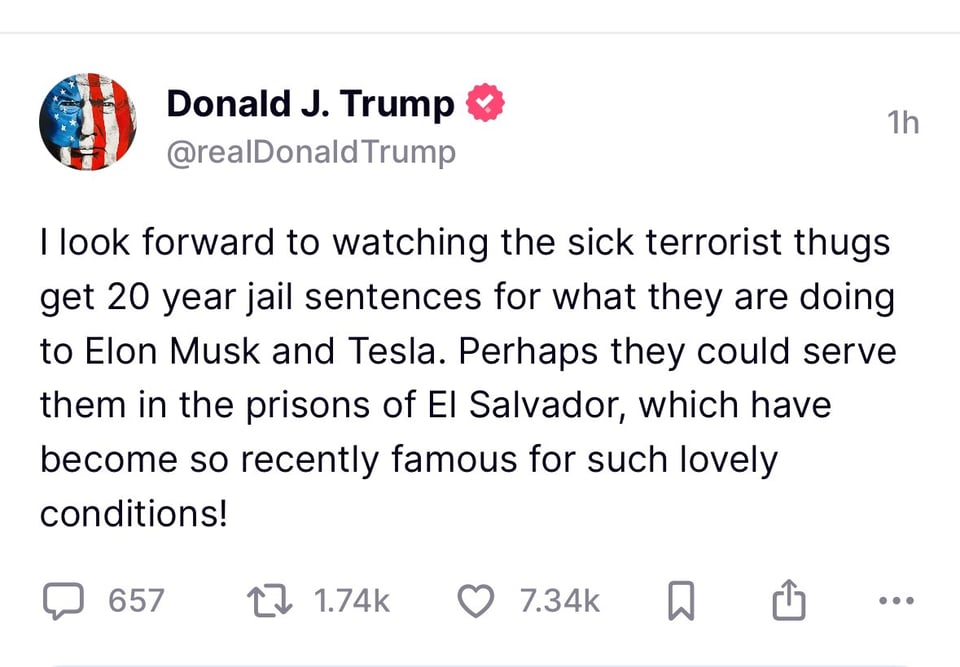
Democratic members of the Oversight Committee challenge legality of Trump’s Secretary of Commerce’s call to buy Tesla Stock.
Letter on Howard Lutnick’s call for the public to buy Tesla stock.
Letter from Democrats on Lutnick illegal sponsorship of Tesla.
More on the Department of Education.
What Does the Department of Education Actually Do? | TIME
On Thursday, President Donald Trump signed an Executive Order titled “Improving Education Outcomes by Empowering Parents, States, and Communities,” that attempts to dismantle the Department of Education. It directs newly-instated Education Secretary Linda McMahon to “return authority over education to the States and local communities.”
Trump said that the department will still keep some “core necessities," and that Congress will vote on whether or not to abolish, since only Congress can officially dismantle a government agency.
“The Democrats know it’s right. I hope they’re going to be voting for it,” Trump said at Thursday’s press briefing about signing the Executive Order. “Because ultimately, it may come before them.”
The historic gutting of the department is part of the charge that has defined the first few weeks of Trump’s second term. Led by his Department of Government Efficiency [DOGE], under the watchful eye of Elon Musk, the President has made great strides to make the government smaller by implementing major cuts and funding freezes across the board.
On March 11, news came that 50% of the Department of Education was set to be laid off—part of its “final mission,” according to the department’s website, which stated that “impacted department staff will be placed on administrative leave beginning Friday, March 21st.”
Speaking to TIME in early March, Jonathan E. Collins, an assistant professor of political science and education at Columbia University's Teachers College, said: “We’re more likely to continue to see what we've been seeing from the Trump Administration. Gutting all the activity underneath it and basically make it [the Department of Education] a shell of itself.”
Amid concern and confusion as to what the future holds under the Trump Administration, here’s a look at the history of the Department of Education and what it actually does:
When was the Department of Education established?
The origins of the Department of Education can be traced back to 1867, when the first Department of this name was established by Congress. Its charge back then was very different and mostly focused on collecting statistics about schools and disseminating some best educational practices. Due to concern that the department would have too much purview over schools, it was then demoted to an Office of Education under different agencies.
The Department of Education as we know it today was established by Congress in the 1979 “Department of Education Organization Act,” after calls for expanded federal funding in education and “national efforts to help racial minorities, women, people with disabilities, and non-English speaking students gain equal access to education,” according to the department’s website.
Collins has pointed out how the department is in its “infancy” in comparison to other agencies.
“We won’t even have begun to fully see how the Department of Education can grow and transform into the best version of itself it can be… the abolition discussion has clouded that fact,” Collins said during a follow-up phone call on March 20, ahead of Trump signing the Executive Order.
“We’ve had education inequality for a long time. We’ve had it longer than we’ve had the Department of Education. The persistence of it just underscores the need for some federal agency that is committed to this," he said.
How big is the Department of Education?
The Department of Education employed around 4,200 employees last September, according to the Office of Personnel Management, which accounted for about 0.2% of overall federal employment last year—the smallest staff of the 15 Cabinet agencies.
What does the Department of Education do?
The Department of Education has many different and varied responsibilities under its current formation and governs many offices including the Federal Student Aid (FSA), Institute of Education Sciences (IES), Office for Civil Rights (OCR), and the Office of Special Education and Rehabilitative Services (OSERS).
Under the FSA, the Education Department manages the $1.693 trillion outstanding federal student loan balance, as well several student aid programs like the Pell Grant and work study. The department is the largest source of loans for college students.
The department also provides 13.6% of funding for public K-12 education, according to the Education Data Initiative, sending funding streams that include Title I—which describes federal allocation of supplemental financial assistance to school districts/schools with a high percentage of children from low-income families—as well as grants under IDEA (Individuals with Disabilities Education Act), providing money to districts to serve and teach students with disabilities, and grants for things like adult rehabilitation services.
The department collects data on education facilities nationwide, and enforces non-discrimination and civil rights laws in federally funded schools, including Title VI and Title IX.
Collins pointed out that Title I, Title IX, and programs at the federal level create an equalizing factor that helps to cut through education inequalities between states, creating “incentives for continuity.”
“This is the problem of pursuing so much responsibility and discretion at the state level,” he said. “The potential danger [with dismantling the Department] is that you're putting a lot of responsibility on the backs of these education agencies across states that are already strapped when it comes to their capacity, and you're creating an environment where [a person’s] educational experience will become heavily dependent on the state they live in.” (Time Magazine)
We won a court order to temporarily stop Trump’s cuts to grant programs Congress authorized to hire and retain teachers in underserved school districts.
— NY AG James (@NewYorkStateAG) March 11, 2025
Now, we’ll keep fighting and standing up for our students, our teachers, and all of our communities.
More proof that, unless the issue is revenge, Trump is out to lunch on why he does what.
He just follows the Project 2025 Bible.
‘It Sounds Strange, Doesn’t It?’ Trump Muses About Gutting the Education Dept.
. . .Trump signed the executive order in the East Room of the White House, which was packed with jittery children.
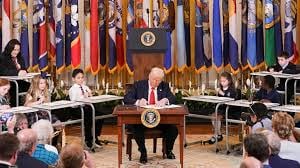
It seemed as if the president just needed a little reassurance.
He was in the East Room of the White House, which was packed with jittery children, conservative activists, influencers and six Republican governors, from Florida, Texas, Virginia, Indiana, Ohio and Iowa. All had come to watch him sign an executive order to gut the Education Department, something conservatives have dreamed of doing for decades. No other president had done it, not even this one the first time he was in office.
Now he was back, and there was the order, sitting atop a small desk at the front of that grandiose room, waiting to be signed.
All around his desk were lots of other little desks, the kind you sit at in grade school. Children of varying ages, dressed in school uniforms, sat swinging their legs under their desks. They looked up expectantly as Mr. Trump approached.
He turned to one small boy and said, “Should I do this?” The boy nodded eagerly. The president spun around and looked at a young girl. “Should I do it?” he asked. She nodded, too.
Encouraged, he sat down, pulled out his power pen and scrawled. The governors and the children and their parents burst into applause.
In some sense, Thursday’s executive order signing was on-brand for Mr. Trump. Whether he’s releasing files related to John F. Kennedy’s assassination, purging the board of the Kennedy Center to appoint himself its head, or carving up the Education Department, this president takes pride in doing what none of the others would dare do.
But otherwise, this signing session was an odd one, as even he had to admit. He lacked that fiery conviction he usually brings to such affairs.
He kept emphasizing that what he doing was not as radical as it might have seemed: “It sounds strange, doesn’t it? Department of Education. We’re going to eliminate it.”
In fact, only Congress can abolish a cabinet agency, but Mr. Trump’s order basically called on the Education Department to come up with a plan for shutting itself down.
He insisted that “everybody knows it’s right,” and he reminded the room that when the department was established, by President Jimmy Carter in the same room in which Mr. Trump was now destroying it, many Americans opposed the idea — even the “famed Democrat senator” Daniel Patrick Moynihan and the editorial board of this newspaper.
Mr. Trump recognized that he was putting his education secretary, Linda McMahon, out of a job, which was maybe a bit awkward. “We’re going to find something else for you to do, OK?” he told her.
He often describes people who make up the federal work force as being part of a shadowy cabal that he is all too happy to pulverize. Not so in this case. “They’re good people,” he said of the Education Department’s 4,200-person work force, many of whom he was effectively firing.
“I want to just make one little personal statement,” Mr. Trump said at one point. Teachers, he said, are among the most important people in the country and everyone ought to “cherish” them. At another point, he promised that money for the federal Pell Grant was not going to vanish. “Supposed to be a very good program,” he said.
What was interesting about Mr. Trump’s seeming ambivalence over this thing he was about to do was that everybody around him was so overwhelmingly ecstatic about it. The person who appeared least excited about what was happening was the one who was making it happen.
“I never thought we’d get any serious major education reform done, let alone dismantling the Department of Education,” said Terry Schilling, a 38-year-old father and activist from Burke, Va., a Washington suburb. He was there with his redheaded wife and six of their seven children. “It’s a beautiful day,” he said, bouncing a baby boy named Tucker on his shoulder, “and I’m just so happy to be here.”
There were activists in the room like Chaya Raichik, the creator of the influential Libs of TikTok account, and Tiffany Justice, a co-founder of Moms for Liberty, a parents rights group that worked hard to help elect Mr. Trump. This was exactly how they hoped a Trump restoration might go.
“You had a lot of Republican presidents promise this,” observed Penny Nance, the president of Concerned Women for America. Mr. Trump didn’t have the temerity to tear up the Education Department the last time he was president.
What changed?
“He had four years to think about it and plan,” Ms. Nance said. “All of us did, frankly.” (New York Times).
One more thing.
Why did Trump go after Columbia University, threatening to take 400 million dollars from New York’s top elite school?
This answer is about revenge. Read it here -
Decades Ago, Columbia Refused to Pay Trump $400 Million. Note That Number.
A quarter century ago, the university was looking to expand. It considered, and rejected, property owned by Donald Trump. He did not forget it. (Read the whole article by clicking the blue headline 👆 - New York Times.)
I have another pet theory about the petty man and Columbia.I am sure he was rejected as an undergraduate at Columbia. It seems unlikely to me that a New York boy would have chosen Fordham over Columbia, unless he was Catholic which Trump was not. We may never know. .. .
All eyes are on Wisconsin.
From now until April 1st.
Early voting started on Tuesday.
Sen. Bernie Sanders: “Musk is so arrogant that he is even intervening in a Supreme Court election right here in Wisconsin…if this guy can intervene in a Supreme Court election in one state, you tell me what mayor's race, what governor's race, what Senate race he cannot buy.” https://t.co/n3jqUgWmhc pic.twitter.com/KjTVnAD5Bu
— CALL TO ACTIVISM (@CalltoActivism) March 18, 2025
Who can you call? What forgotten friend or relative in the Badger State?
But - On Sunday, all eyes will be on the Comedians, to hear what happens.
Comedians will celebrate Conan O'Brien at the Kennedy Center on Sunday. Will they take on Trump?
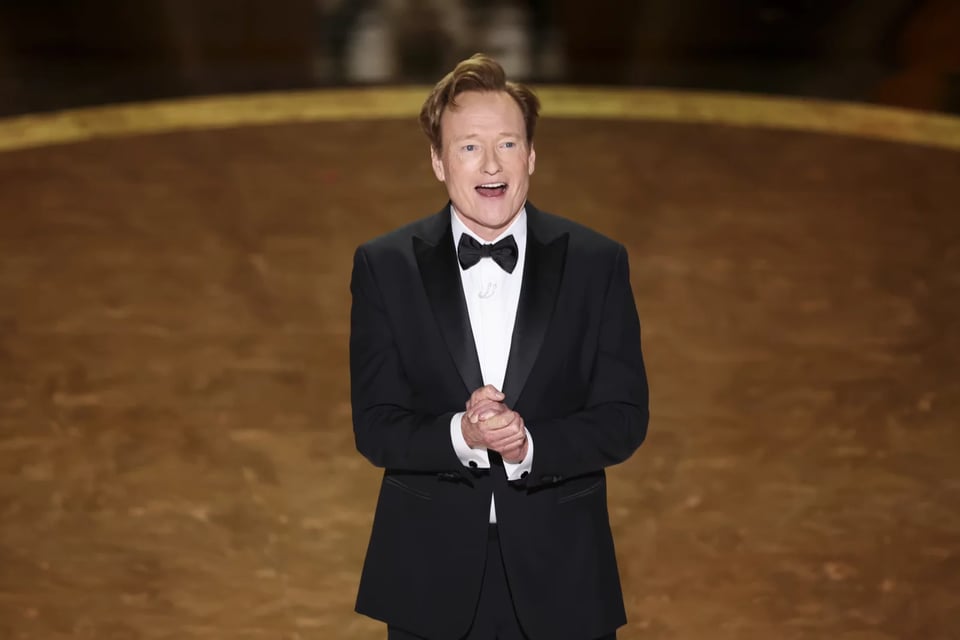
The show celebrating the Mark Twain Prize for American Humor — the most coveted award in comedy — is all about comedians loving on other comedians. Jerry Seinfeld paid tribute to Julia Louis-Dreyfus when she won. Chris Rock lovingly embarrassed Kevin Hart. And when Adam Sandler was honored, his friend — and this year's recipient — Conan O'Brien declared, "Good god in heaven, Kennedy Center, what have you done? No award has screwed up this badly since a MacArthur Genius Award was given to Vin Diesel." (For the record, Diesel has not actually won a MacArthur Fellowship.)
The John F. Kennedy Center for the Performing Arts in Washington, D.C., where the annual event takes place, has been in upheaval. President Trump rid the Kennedy Center's board of its Democratic appointees. He ousted both board chair David Rubenstein and president Deborah Rutter and then became chair himself. In response, artists have canceled gigs.
Comedians, clowns and fools have always poked fun at the powerful. So will Trump's conquest be fodder for jokes at this year's Mark Twain Prize?
If the past is prologue, it could happen.
When Jon Stewart accepted his award in 2022, he talked about the rise in authoritarianism around the world.
Stewart said that authoritarians threaten comedy and other artforms and that democracy is "fragile and precious — and the way to guard against it isn't to change how audiences think. It's to change how leaders lead."
'The Best Part Of The First Amendment': Dave Chappelle Accepts Mark Twain Prize.
When Dave Chappelle received his award in 2019, he talked about how standup is a uniquely American genre, partly because of the First Amendment.
In 2017, David Letterman ended his acceptance speech with a quote from Mark Twain: "Patriotism is supporting your country all the time, and your government when it deserves it."
The Mark Twain Prize is taping on Sunday, but won't be streamed on Netflix until a future, undisclosed date. In the meantime, the Kennedy Center is keeping the cast of Conan O'Brien's Twain Prize a secret. Yet, the event has long been a bellwether for where comedy is on any given year. Will the comedians performing come out and address the moment? Or will they keep the focus squarely on O'Brien's career? Either way, Washington could use a laugh right now.(NPR)
Enjoy the first weekend of spring.
Remember to breathe.
Protest as you can.
I will see you on Tuesday.